Since many believe there is no sincerer pleasure than trying new dishes, especially something that is eaten by some people for over centuries. To give you a sense of what Iranians’ tastes and cuisine are like follow us. Some say the way Iranians use spices or the effort they put into cooking made the food finger-lickingly satisfying and Iranians amazing gourmets and good eaters. Iranians love food and making food, so if you are in Iran, get up, have your breakfast early, dine late, and eat all the way in between.
Breakfast
“All happiness depends on a leisurely breakfast.” Breakfast in Iran mainly consists of bread, cheeses, eggs and tea. There are various loaves of bread (noun in Farsi) available on markets or bakeries. Mostly flatbreads like Lavash, Sangak, or Barbari which is the thickest one. for buying Iranian bread like Barbari, you can look for traditional bakeries (nounvayi in Farsi), signed by a bread laid at the shop window and a queue of chitchatting elderly commenting about world order with newspapers and bags in hands to carry hot nouns. There are also bread shops, selling baguettes, doughnuts, pies, and pastries. Second, comes the cheese. You can buy traditional cheese such as Liqvan from markets or you can choose among around 10 other types of cheeses like feta or mascarpone. you can have cucumber and tomatoes with your bite.
There are cafes and teahouses serving omelet, eggs, or Haleem which is a thick soup, being made by boiling wheat or barley along with meat and sometimes lentils for hours. It is usually served with cinnamon powder and sugar in early mornings.
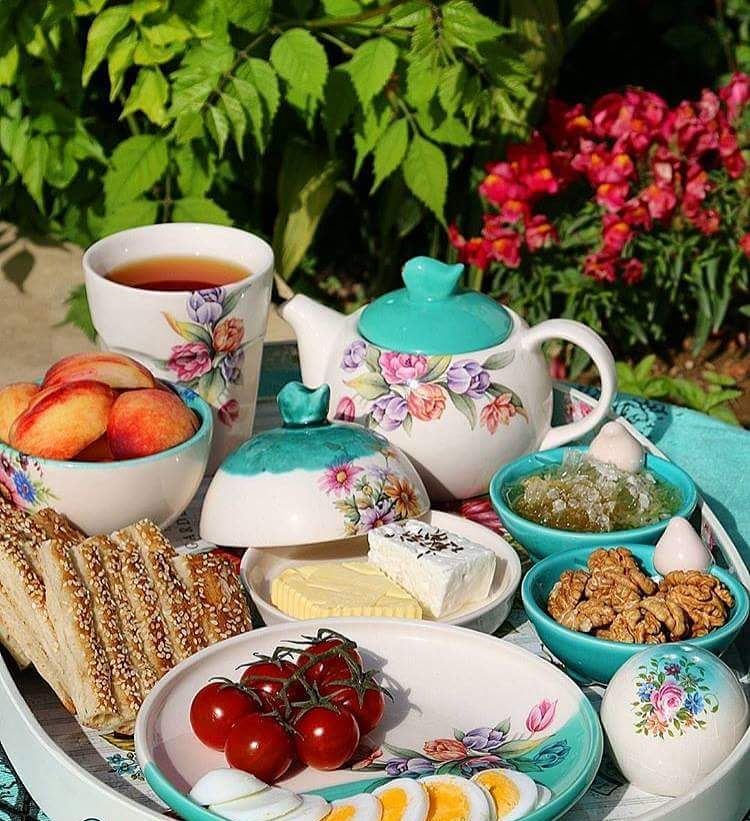
Although Iranians first option for a morning drink is black or sugary tea, other drinks such as juices and milk, like the rest of the word, are also on our tables.
By the way, you can find all the above in your hotel’s breakfast menu.
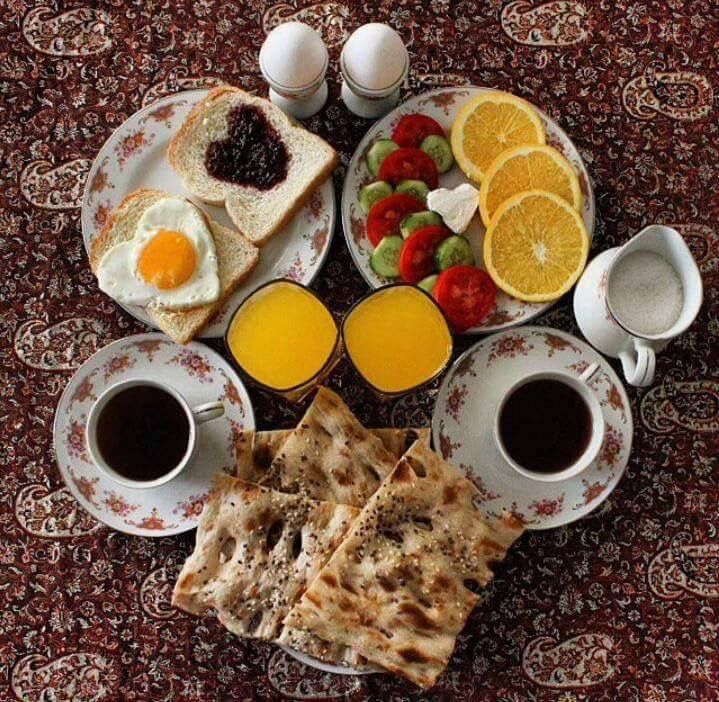
Lunch
When an Iranian think about what to have for lunch, be sure the first thing that pops into the mind here is rice plus something such as stew, kebab, or a variety of different rice dishes. We are not the world’s first rice consumers or producers but I can assure you can find the best rice dishes here. Iranian culinary terms referring to rice are numerous. We call rice, cooked in a seasoned broth while the grains remain separate, “polo” (pronounce it like polo, the game). Stirring it with pieces of cooked onion, as well as a mix of spices, or adding meat, fish, vegetables, and herbs, or dried fruits result in various dishes and names.
Polo is a base for other stews or cooked ingredients to be added. The most popular stews in Iran are Qeyme, Fesenjaan, and Qormeh Sabzi, which is considered as Iran’s national food at some points.
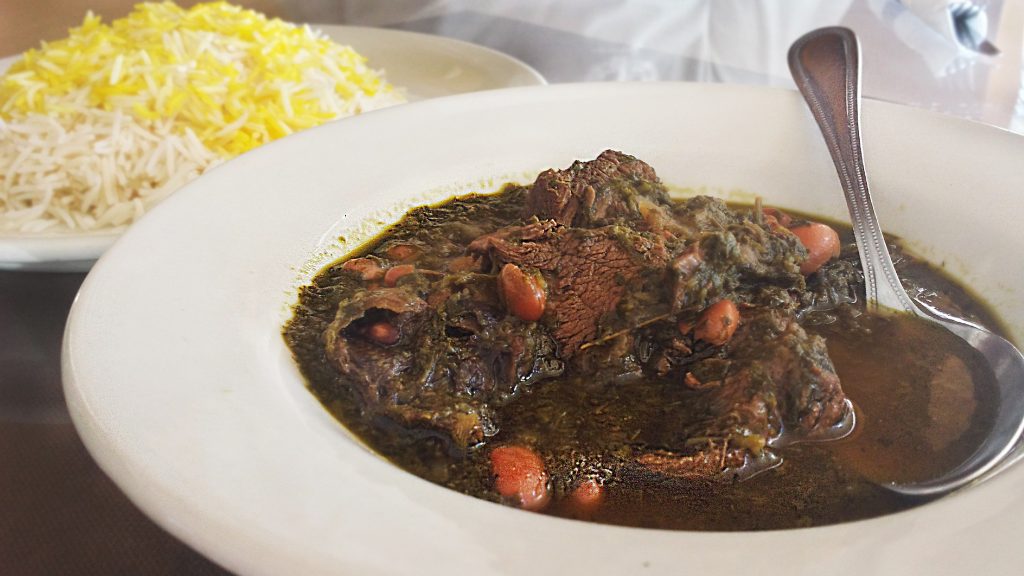
Qormeh Sabzi is a stew made with meats, herbs, kidney beans, and vegetables.
There are also different kebabs in numerous styles like Jouje Kebab (Chicken Kebab) or Koobideh (ground meat of cow or sheep kebab). Abgoosht which is like a hearty mutton soup thickened with chickpeas is strongly recommended for lunch since it is too fatty and starchy for dinners. Abgoosht (literally means meat juice) is also called Dizi, referring to the traditional stone crocks it is served in. Abgoosht is usually made with lamb, chickpeas, white beans, onion, potatoes, and tomatoes, turmeric, and dried lime.

Kebabs, different polos, and Shirazi salad can be seen in the picture.
Dinner
Besides all the fast foods or Italian cuisine that you can have anytime anywhere in Iran, there are plenty of foods you can find on an Iranian family’s table such as Kuku.
Kuku is an egg based dish made with whipped eggs which then are folded in with various ingredients.

Many families seat around a square tablecloth on the ground and serve food with several side dishes such as Torshi (pickled vegetables), yogurt, vegetables, bread, and etc.
Some rules come with the tablecloth like nobody should put the foot on the tablecloth or throw wastes on it. The elder member of the family usually at the head of the tablecloth.
Browsing Category:Iran Travel Guide Iranian Cuisine

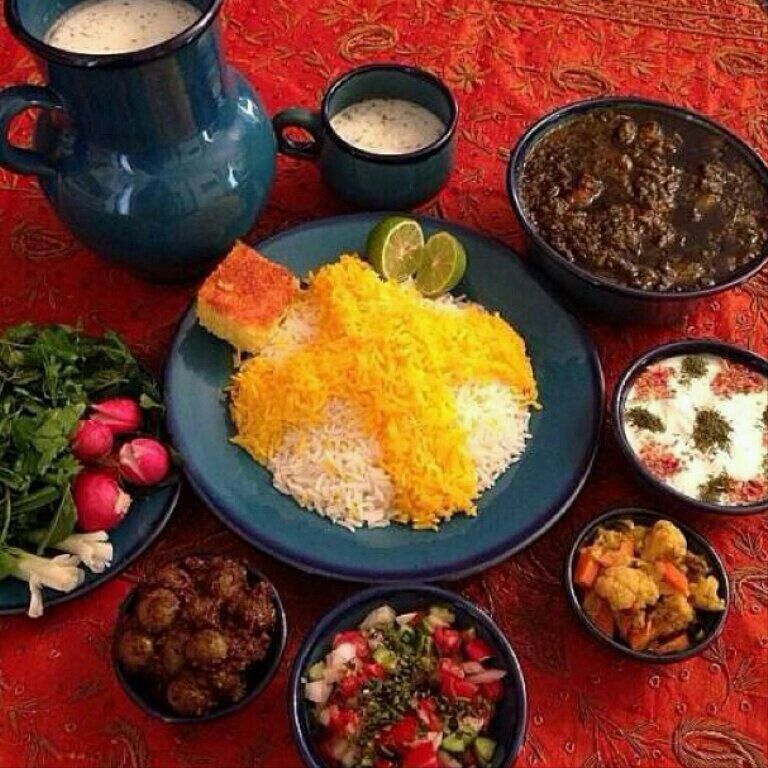
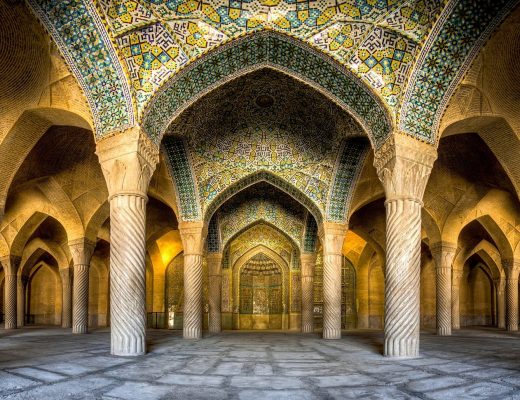
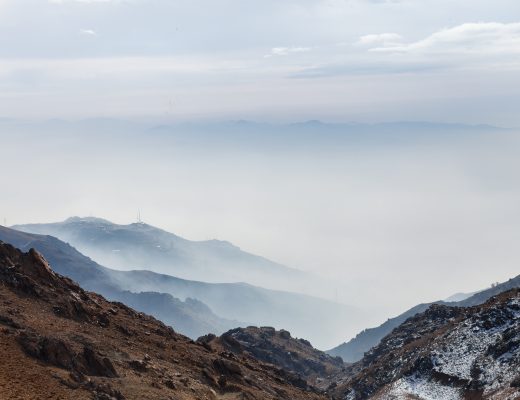
No Comments